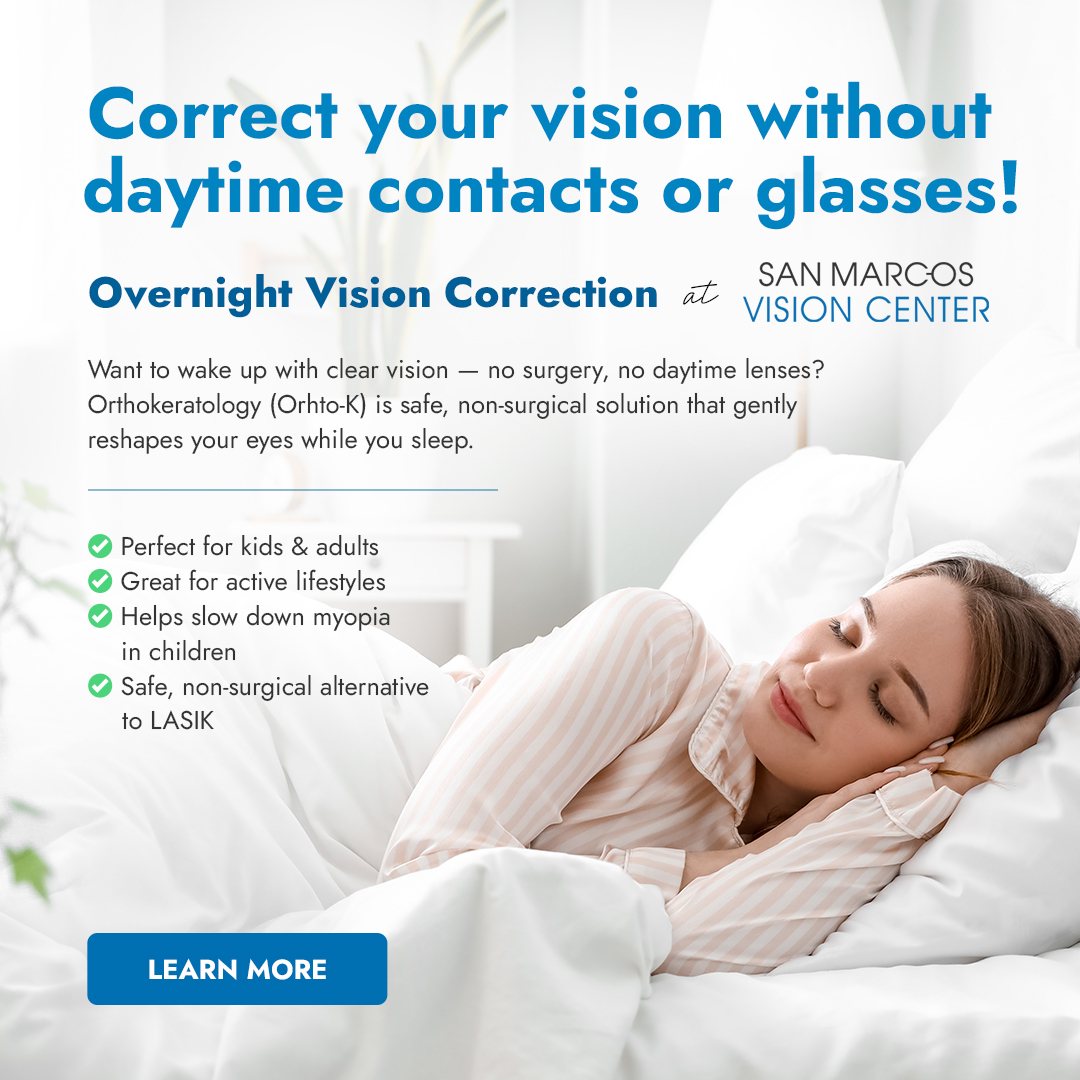
Taking care of your contact lenses is crucial to maintaining your vision and eye health. We will explore the significance of adequate contact lens maintenance. We delve into the various types of contact lenses available, highlighting their unique care requirements.
Users must prioritize proper lens hygiene to prevent eye infections and ensure the longevity of their lenses. By understanding the diverse categories of contact lenses, individuals can adopt best practices tailored to their specific type.
Understanding Your Contact Lenses
Choosing the right contact lenses is crucial for maintaining eye health and achieving optimal vision. Lots of contacts are made to fit different eyesight needs and the way people live.
Materials and Types
Contact lenses come in different materials to meet different needs and likes. The main materials are hydrogel, silicone hydrogel, and materials that let gas through.
Hydrogel lenses have a lot of water in them and are comfy, whereas silicone hydrogel lenses let more oxygen get to the cornea, so they are good for wearing for a long time. Rigid gas permeable (RGP) lenses, which are tough, give sharp vision and work well for certain eye problems.
Daily vs. Extended Wear
Daily disposable contact lenses are designed for convenience and hygiene, reducing the risk of infections. They are ideal for busy lifestyles or individuals with allergies. Extended-wear lenses, typically crafted from silicone hydrogel, are designed for continuous wear, including overnight, and are beneficial for those who prefer not removing lenses daily.
Specialized Options
Contact lenses offer a versatile and effective solution for various optical needs and conditions. There's a specialized option available for nearly every type of eye concern.
Bifocal contacts for astigmatism: These advanced soft contacts correct presbyopia and astigmatism, allowing individuals to remain glasses-free after age 40, even if they have astigmatism.
Contacts for dry eyes: Certain soft contact lenses are designed to reduce the risk of dry eye symptoms related to contact lenses.
Colored lenses: Many contact lenses come in colors that enhance or change the natural color of the eyes.
Prosthetic lenses: Opaque soft lenses can be custom-designed to mask the disfigurement of an injured or diseased eye, matching the appearance of the unaffected eye.
Custom lenses: Made-to-order contact lenses can be tailored to an individual's unique eye shape and visual needs.
UV-inhibiting lenses: Some soft contact lenses help protect the eyes from the sun's ultraviolet rays, which can cause cataracts and other eye problems.
Scleral lenses: Large-diameter gas permeable lenses are designed to treat keratoconus, other corneal irregularities, and presbyopia.
Myopia control contacts: Special lenses are being developed to slow or stop the progression of nearsightedness in children.
Care for Your Contact Lenses
To ensure the best care for your contact lenses, consider the following factors:
Oxygen Permeability: Lenses that let more oxygen through, such as silicone hydrogel and RGP lenses, can usually be worn for longer times.
Vision Correction Needs: Certain materials or lens designs might suit individuals with high prescriptions or special eye care needs.
Comfort: This is subjective and can vary from person to person. Some might not find RGP lenses comfortable but like the clear vision they offer, while others might go for the comfort that soft lenses give right away.
Lifestyle: Whether you plan to wear your lenses daily, occasionally, or overnight, you can choose the best material for you. Lenses meant to be worn for a long time need to let a lot of oxygen through, but lenses you throw away every day might need to attract more water.
Cost: Certain or specialized lens materials might have a higher price tag. Discussing budget considerations with your eye care professional is always a good idea.
Past Experience: If you’ve worn contact lenses before and had a good or bad experience with a particular material, this can guide your eye care professional’s recommendation.
Cleaning and Disinfecting
Taking care of your contact lenses is important. To clean and disinfect your contact lenses properly, follow these essential steps:
Handwashing: Wash your hands with soap and water before touching your contact lenses. Use antibacterial soap and dry your hands with a lint-free towel to avoid clouding or soiling your lenses.
Choosing Cleaning Solutions: Use a fresh contact lens cleaning solution every time. Avoid using tap water, saliva, saline solution, or rewetting drops, as they do not disinfect your lenses effectively.
Step-by-Step Cleaning: Rub your contact lenses with your fingers and rinse them with a fresh cleaning solution. Avoid letting your fingernails touch the lenses to prevent germs and dirt buildup.
Disinfecting Tips: Rinse your contact lens case with a fresh solution and leave it overturned and open to dry. Do not clean the case with water to avoid impurities and microorganisms. Also, replace your contact lens case at least every three months, and never wear your lenses more than 30 days after opening.
Safe Handling of Your Contact Lenses
Contact lenses offer a convenient alternative to traditional eyeglasses. They provide clear vision without affecting your appearance or physical activity. However, taking care of your contact lenses is crucial for their optimal performance.
Insertion Techniques
Inserting contact lenses correctly is crucial for comfort and eye health. Here are some key techniques to ensure your lenses are properly inserted and safe to wear.
Wash Your Hands: Always wash your hands well with soap that doesn't have lotion or fragrance and dry them with a towel that doesn't leave bits of lint behind. This stops germs and bacteria from getting into your eyes.
Inspect the Lens: Take the lens out of its case or package and check it for any tears, cuts, bits of lint, or other damage. Make sure it's not inside out by looking at the edges—if the edge looks like it's flaring out, it's inside out.
Insert the Lens: Put the lens on the tip of your finger and use your left hand to hold your top eyelashes up against your eyebrow. Use the middle finger of your right hand to pull your bottom eyelid down. Gently put the lens on your eye. After the lens is in place and centered, blink softly. If the lens moves out of place or there are air bubbles under it, a firmer blink might help pop it out so you can try again.
Removal Practices
Proper removal and care of contact lenses are important. Here are simple practices to follow when removing your contact lenses to ensure they remain clean and safe for continuous use.
Wash Your Hands: Before removing your contact lenses, wash your hands again to prevent contamination.
Hold the Lids: Hold the upper and lower lids as you did for the insertion. Touch the lens and slide your fingers together using the sides of your thumb and pointer finger. Once the lens wrinkles, pull your hand straight back.
Clean and Disinfect: After you've taken the lens out, put it in your hand and drop some of the cleaning solution on it recommended by your eye care expert. Lightly rub the lens for five seconds, then turn it inside out and rub again for five more seconds. Rinse the lens with the solution, then put it into a clean lens case with fresh solution.
Avoiding Mistakes
Maintaining healthy eyes while wearing contact lenses involves more than proper insertion and removal. Follow these guidelines to ensure your lens-wearing experience is safe and comfortable.
Avoid Water Exposure: Never wear your contact lenses in water, including swimming, showering, or washing your face. Water can have bacteria and other stuff in it that might cause serious eye problems.
Replace and Clean Regularly: Replace your contact lenses as directed by your eye care professional. Clean and disinfect your contact lenses properly using the appropriate solution and follow the recommended cleaning and disinfection instructions.
Avoid Sleeping with Lenses: Remove your contact lenses before bed to minimize the risk of eye infections and other complications.
Handle with Care: Keep your nails short, smooth, and clean to keep from tearing the lenses or scratching your eye.
Follow Prescribed Schedule: Always follow the prescribed wearing schedule for your contact lenses, as overwearing or wearing them for too long can lead to irritation and potential health risks.
Storing Lenses
Proper insertion and removal techniques are vital for properly storing contact lenses. When you care for your contact lenses, you protect your vision.
Case Types: Contact lens cases come in various types, but the most common are the screw-top and flip-top varieties. While personal preference may guide your choice, it is essential to ensure that the case you select is easy to clean and keeps your lenses securely sealed from contaminants.
Case Maintenance: To properly care for your contact lenses and their case, rinse the case with fresh contact lens solution (never water) after each use and leave it open to air dry. This helps prevent the growth of bacteria and fungi. Avoid using tap water to clean the case, as it can harbor microorganisms that risk eye health.
Replacement Timing: Contact lens cases should be replaced at least every three months or sooner if they become cracked or damaged. Regular replacement is critical because even with diligent cleaning, biofilm—a thin layer of bacteria—can build up, making it nearly impossible to sterilize the case fully.
Conclusion
In conclusion, caring for contact lenses is the cornerstone of maintaining optimal eye health. Each step ensures the elimination of bacteria and reduces the risk of eye infections. Clean lenses prevent complications, ensuring that users enjoy clear vision and comfort.
Remember, healthy practices translate to healthy eyes. Adherence to these guidelines is crucial for long-term eye wellness. This care directly correlates to a better lens-wearing experience. Users must prioritize these steps to protect their vision.

 Specialty Contacts
Specialty Contacts





